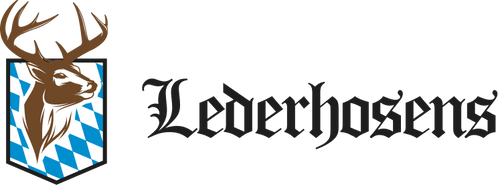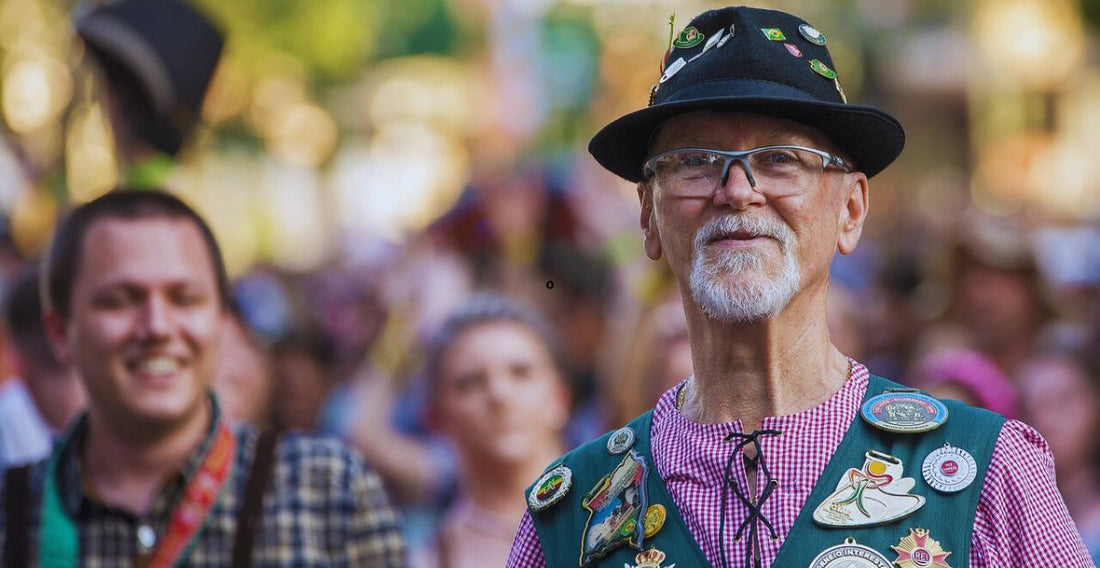Can you believe today’s largest beer festival in Munich was just a wedding ceremony? To melt down the ice around Oktoberfest’s origin, the world’s largest festival was a wedding ceremony of a Royal couple in Bavaria. The journey of Oktoberfest from just a horse race to a grand folk festival was a rolling coaster ride. Beer booths turned into giant beer tents and the small food stalls became large ones over the decades. The thrilling carnivals evolved into large amusement parks. The history of Oktoberfest Munich is full of happy and sad moments. However, one thing that stayed unchanged is the traditional ambiance of the festival. The visitors still wear traditional Lederhosen and Dirndls to the event. Let’s discover how the Bavarian festival grew into the world’s largest festival!
Year Wise History of Oktoberfest Munich
-
1810: The first Oktoberfest was held
-
1811-1818: Oktoberfest continued annually, with an agricultural fair added in 1811.
-
1813: The festival was paused in 1813 due to the Napoleonic Wars.
-
1835: The 25th anniversary of Oktoberfest featured the first formal costume parade.
-
1850: The Bavaria Statue was added to the festival grounds.
-
1880: Electricity was introduced, lighting up over 400 booths and tents.
-
1881: Bratwurst and roasted chicken (Hendl) were sold for the first time.
-
1887: Lederhosen and Dirndl were announced as the official costumes.
-
1892: Glass beer steins were introduced at Oktoberfest.
-
1910: Oktoberfest celebrated its 100th anniversary.
-
1913: The Bräurosl tent was completed.
-
1933-1938: The Nazi regime used Oktoberfest as a propaganda tool and renamed it Großdeutsches Volksfest in 1938.
-
1946-1948: After World War II, smaller "Autumn Festivals" were held instead of Oktoberfest.
-
1950: The tradition of the mayor’s first tap (“O'zapft is”) began.
-
1980: A bomb exploded at Oktoberfest that killed 13 and left 221 injured.
-
1985: Oktoberfest celebrated its 175th anniversary.
-
2005: The "Quiet Oktoberfest" was introduced.
-
2010: Oktoberfest celebrated 200 years.
-
2020-2021: No Oktoberfest due to COVID-19 pandemic.
The First Oktoberfest: Bavarian Royal Wedding 1810
The Oktoberfest started with the famous Bavarian Royal Wedding of 1810. Prince Ludwig I of Bavaria married Princess Therese of Saxe-Hildburghausen on 12 October 1810. Munich’s nobility decided to invite the citizens of Bavaria for a five-day celebration held at Theresenwiese from October 12 to October 17, 1810. The celebration included a horse race, which Andreas Michael Dall’Armi had proposed. Over 50,000 people watched Franz Baumgartner (a member of the Bavarian National Guard) win the historic race. The event offered free drinks and food to every guest for five days.
Oktoberfest Under Bavarian Agricultural Association 1811-1818
In 1811, Oktoberfest returned with a new focus. Bavarian royalty saw the festival as a way to boost the economy and decided to hold it again. The Bavarian Agricultural Association, called "Landwirtschaftlicher Verein in Bayern," took charge. They added an agricultural fair alongside the horse races to showcase Bavarian farming and cattle markets. The beer and food stalls were introduced in 1818. Munich city officials recognized the festival’s potential and overtook the charge of the festival in 1819.
The Silver Jubilee of Oktoberfest & First Costume Parade 1835
Munich celebrated the 25th anniversary of Prince Ludwig I and Princess Therese’s wedding in 1835. The Bavarian citizens attended the first-ever traditional costume parade to honor the royal couple on October 4, 1835. Around 9,000 people dressed up in trachtens to honor the royal couple. Traditional Bavarian brass bands played folk music throughout the parade. This event paved the way for the 1842 Oktoberfest, where 35 bridal couples marched in traditional attire to celebrate the marriage of Crown Prince Maximilian and Princess Marie Friederike. The costume parade remains a part of Oktoberfest today.
Addition of Bavaria Statue to Oktoberfest Hall of Fame 1850
The Statue of Bavaria has been watching over Oktoberfest since 1850. King Ludwig I ordered the construction of the grand statue. Leo von Klenze first sketched the statue in a traditional Bavarian style. Ludwig Michael Schwanthaler then added Germanic and romantic touches to the design. Finally, Johann Baptist Stiglmaier and Ferdinand von Miller brought the statue to life. The statue is a part of the Oktoberfest Hall of Fame.
The Evolution of Munich Oktoberfest in the 1880s
The 1880s marked a period of growth for Oktoberfest. Some of the notable developments in Oktoberfest Munich during the era are:
-
Electricity was introduced in 1880 that lit up over 400 booths and tents. This addition led to the arrival of new amusement rides and live performances.
-
Bratwurst and roasted chicken (Hendl) were sold at the festival for the first time in 1881. These foods quickly became Oktoberfest staples.
-
Lederhosen and Dirndl became official costumes for Oktoberfest in 1887.
-
1887 marked the entry of the Oktoberfest Staff and Breweries. These breweries brought decorated horse teams and bands on the festival's opening day.
-
Glass beer steins were introduced for the first time in 1892. Before the Oktoberfest, beer was traditionally served in stoneware steins.
Oktoberfest’s 100th Anniversary: The Golden Jubilee 1910
Oktoberfest celebrated 100 years with a grand event in 1910. People from Munich gathered to join in. Visitors drank a record 120,000 liters of beer. The festival grounds were filled with excitement as everyone came together. This celebration honored a century of Oktoberfest and showed how much the tradition means to Bavarians.
The Installation of the Largest Bräurosl Tent 1913
The Bräurosl tent was completed in 1913. It became the largest beer tent at Oktoberfest, seating up to 12,000 people. As Oktoberfest grew in popularity, the demand for more space led to this massive structure. The Bräurosl quickly became the hub of the festival.
Oktoberfest Munich During Nazi Regime 1933-1938
The Nazi regime used Oktoberfest as a propaganda tool. They replaced traditional Bavarian symbols with swastika flags in 1933. The Nazi government banned Jewish in from participating in the festival in 1935. The festival was renamed “Großdeutsches Volksfest” (Greater German Folk Festival). The Nazis transported people from the Sudetenland to Munich for Oktoberfest to display their power.
The "Autumn Festival" (1946-1948)
Oktoberfest didn’t happen between 1939 and 1945 due to World War II. However, Munich held a smaller "Autumn Festival" between 1946 and 1948. This version of the festival was modest. Stronger Oktoberfest beer was not allowed. The celebrations reflected the harsh post-war conditions. Oktoberfest returned to its full form in 1949
The Tradition of Mayor’s First Tap (‘O'zapft is’) started in 1950
A new Oktoberfest tradition began in 1950 when Munich Mayor Thomas Wimmer tapped the first beer keg at the festival. This event happened by chance. Wimmer missed his ride to Oktoberfest and got a lift from his friend Michael Schottenhamel, who owned the Schottenhamel tent. During the ride, Schottenhamel suggested Wimmer tap the first keg. Wimmer agreed and tapped the first keg, shouting, “O'zapft is!”(It's tapped).
The Oktoberfest Bombing 1980
On September 26, 1980, a bomb exploded during Oktoberfest. The blast occurred at 10:20 p.m. near the main entrance to the Bavariaring circuit road. Gundolf Köhler, a 21-year-old from the Wehrsportgruppe Hoffmann, carried out the attack. The blast killed thirteen persons. It also injured 221 people, many of whom sustained severe burns and wounds. This horrific incident marks one of the worst days in Oktoberfest history.
175th Anniversary: Seven Million Visited Oktoberfest 1985
Oktoberfest celebrated its 175th anniversary in 1985. Around 7.1 million visitors attended the festival. Special events and attractions filled the festival grounds. Parades moved through the streets of Munich with floats, traditional costumes, and marching bands. Local troupes performed folk dances. They invited everyone to join in the fun.
The Introduction of Quiet Oktoberfest in 2005
Oktoberfest introduced "Quiet Oktoberfest" in 2005 for families. This approach aimed to create a relaxed environment. Tents played soft, traditional Bavarian brass music until 6 p.m. each day. The policy reduced the festival's rowdy atmosphere. It made Oktoberfest more inviting for families and older visitors. The change preserved the traditional beer tent experience. It also offered a calmer setting.
Celebrating 200 Years: The Oide Wiesn in 2010
Oktoberfest celebrated the 200-year journey in 2010. The organizers introduced "Oide Wiesn," which offered a pure traditional essence of the old Wiesn. This addition featured historical attractions and cultural activities, including horse races. Oide Wiesn celebrated Oktoberfest's history. It quickly became a favorite among locals and visitors. The new area brought a sense of tradition back to the festival.
Has Oktoberfest ever been Canceled?
Yes, Oktoberfest has been canceled on several occasions. Here is the list of Oktoberfest cancellations;
-
1813: Canceled due to Bavaria's involvement in the Napoleonic Wars.
-
1854: Canceled because of a cholera epidemic in Munich, which also claimed the life of Queen Therese.
-
1866: Canceled due to the Austro-Prussian War.
-
1870: Canceled as Bavaria joined the Franco-German War.
-
1873: Canceled because of another cholera outbreak in Munich.
-
1914-1918: Canceled during the First World War.
-
1919-1920: Only more minor Autumn Fests were held due to post-war difficulties.
-
1923-1924: Canceled due to hyperinflation in Germany.
-
1939-1945: Canceled during the Second World War.
-
2020: Canceled because of the COVID-19 pandemic.
-
2021: Canceled again due to COVID-19 concerns.
Modern Times: Oktoberfest Munich Today
Bavarian Beer: The Heart of Oktoberfest
Oktoberfest is nicknamed the “Biggest Beer Fest” because of the large amount of beer consumed. Only the following six Munich breweries are allowed to provide this beer for the festival:
-
Augustinerbräu
-
Hacker-Pschorr-Bräu
-
Spaten-Franziskaner
-
Löwenbräu,
-
Paulaner
-
Hofbräuhaus
The Oktoberfestbier has 5.8%- 6.3% alcohol, which is more than other German beers. Visitors drank 6.3 million liters of beer in Oktoberfest 2023.
Traditional Bavarian Attire: Lederhosen and Dirndls
The official costumes for Oktoberfest are still the traditional Bavarian dresses. Men adorn Lederhosen, while women wear Dirndls. These outfits have become iconic festival symbols, adding to the authentic Bavarian experience. Brass bands playing lively tunes enhance the festival's atmosphere, creating a joyful environment.
Traditional Bavarian Cuisine
Starting in 1818, Bavarian local food still takes the spotlight at the Munich Oktoberfest. Roasted chicken (Hendl) is the most popular festival staple. From famous pretzels and sausages to pork knuckles and Obatzda, every traditional dish is an essential part of the Oktoberfest experience.
Wrap Up
Oktoberfest’s history began as a royal wedding celebration. However, it has evolved into the world’s largest beer festival today. Over the years, it introduced traditions like the mayor’s first keg tap and Oide Wiesn. The festival has faced challenges, including wars and pandemics. Despite these, Oktoberfest has continued to thrive. Today, it is a celebration of Bavarian culture. The festival showcases beer, food, music, and traditional clothing. As you plan your visit, wear your Lederhosen or Dirndl. Join the millions who travel to Munich each year to experience the history of this iconic event.

